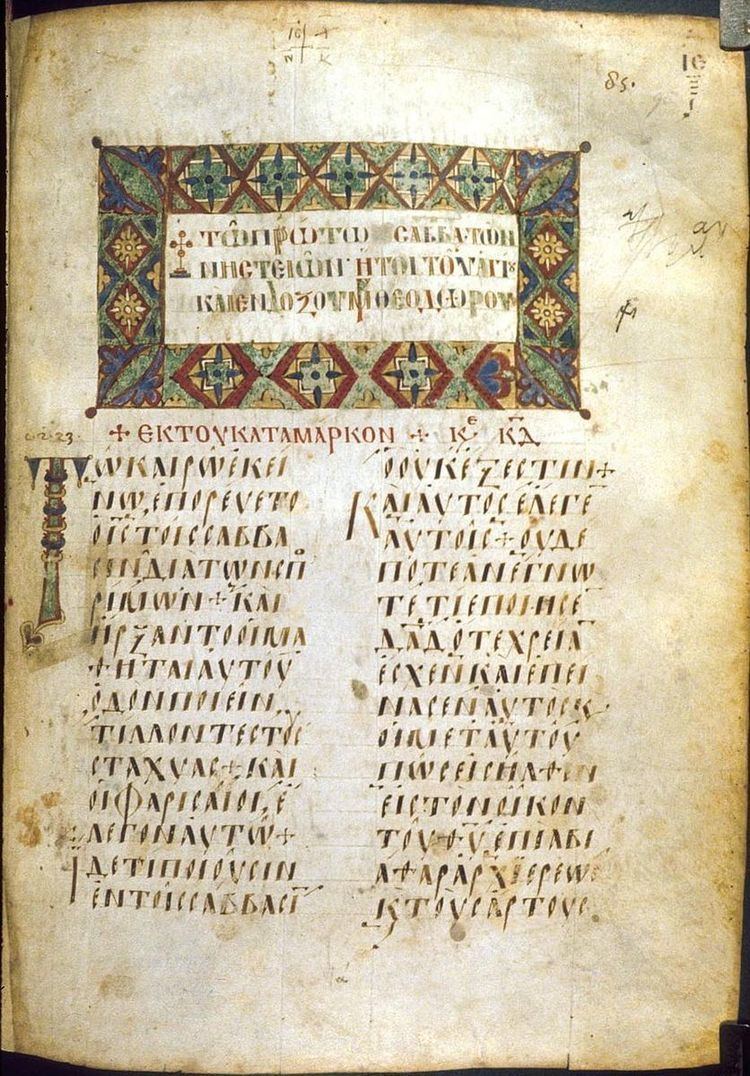Name Codex Prusensis Date 9th century Size 31.5 by 23 cm | Text Evangelistarion | |
 | ||
Lectionary 152, designated by siglum ℓ 152 (in the Gregory-Aland numbering) is a Greek manuscript of the New Testament, on parchment leaves. Paleographically it has been assigned to the 9th century.
Contents
Description
The codex contains Lessons from the Gospels of John, Matthew, Luke lectionary (Evangelistarium) with some lacunae. It is written in Greek uncial letters, on 224 parchment leaves (31.5 cm by 23 cm), in two columns per page, 24-25 lines per page.
It has the decorated headpieces and initial letters. Headpieces are with geometric and foliate decoration in gold or silver. The initial for epsilon has anthropomorphic motive with blessing hand (see illustration).
The manuscript is ornamented, the uncials leaning to the right, a fine copy, with small uncial notes.
History
The manuscript was named Codex Prusensis from Bursa (in Anatolia or Bithynia).
It was acquired by John Covel, who was a chaplain of the Levant Company in Constantinople between 1670-1676, who brought it to England, 1670-1676. After 1676 Covell worked at the Christ's College in Cambridge. He sold it to Robert Harley on 27 February 1715 (or 1716).
The manuscript was examined by Gregory (1883).
The manuscript is not cited in the critical editions of the Greek New Testament (UBS3).
Currently the codex is located in the British Library (Harley 5787).
